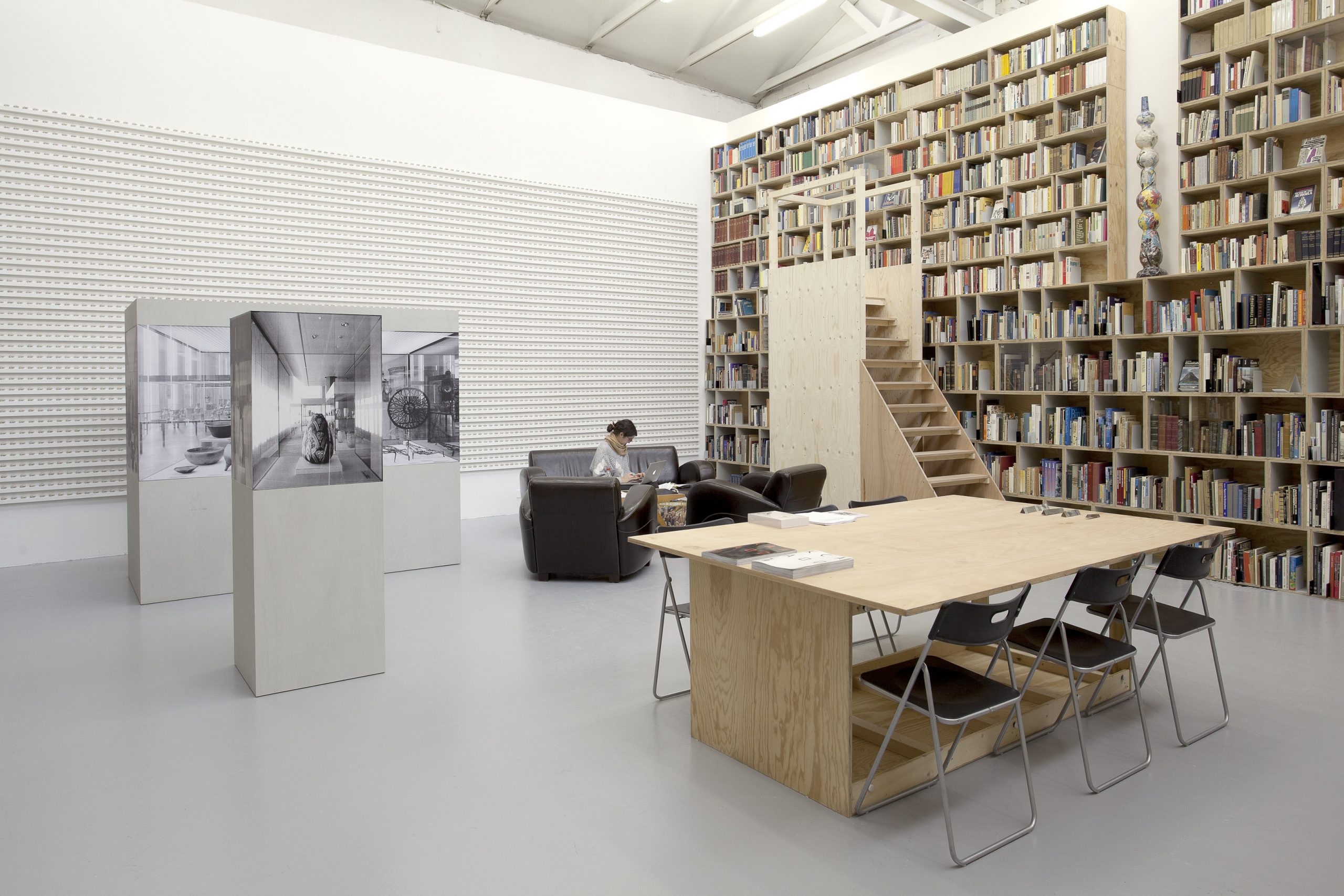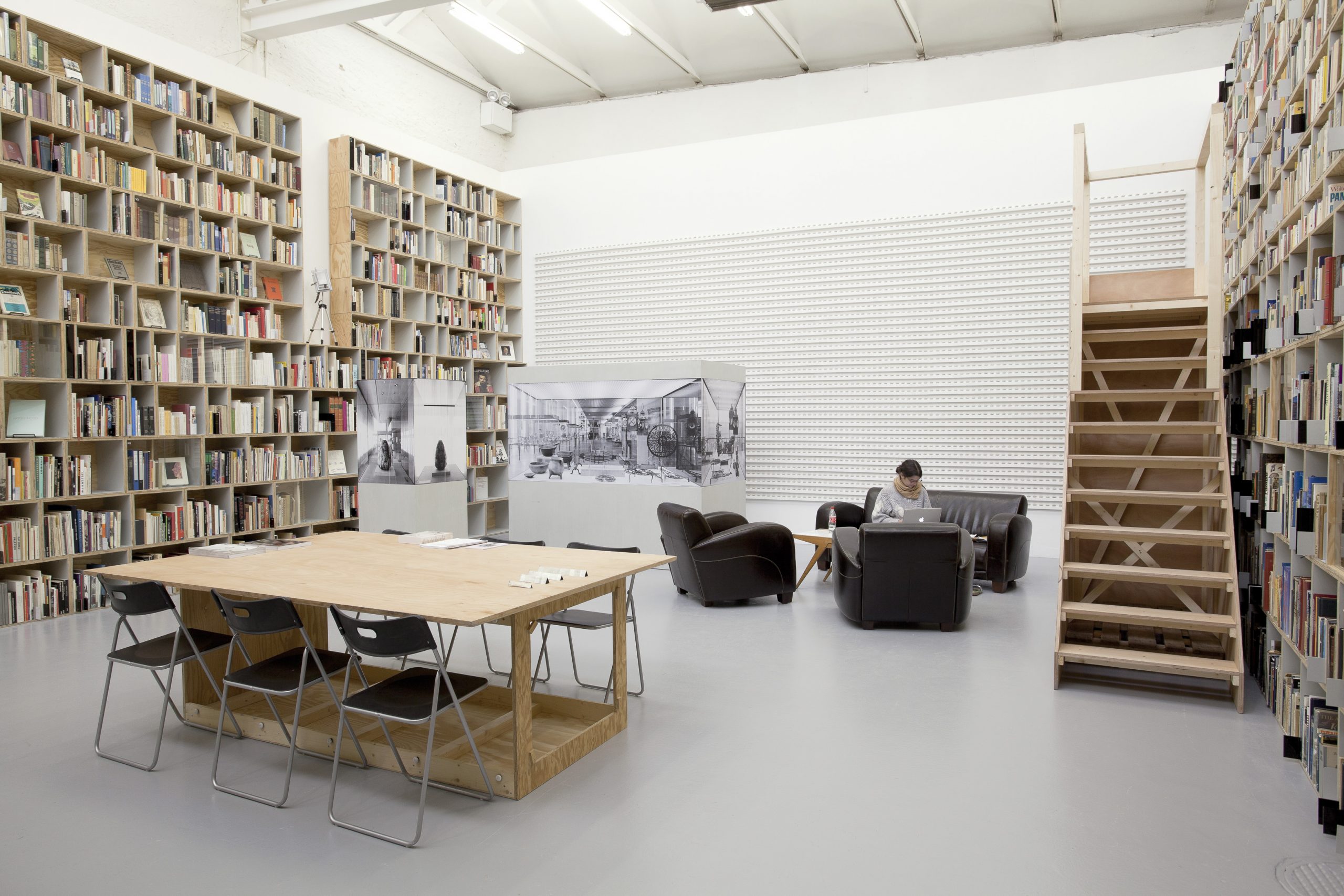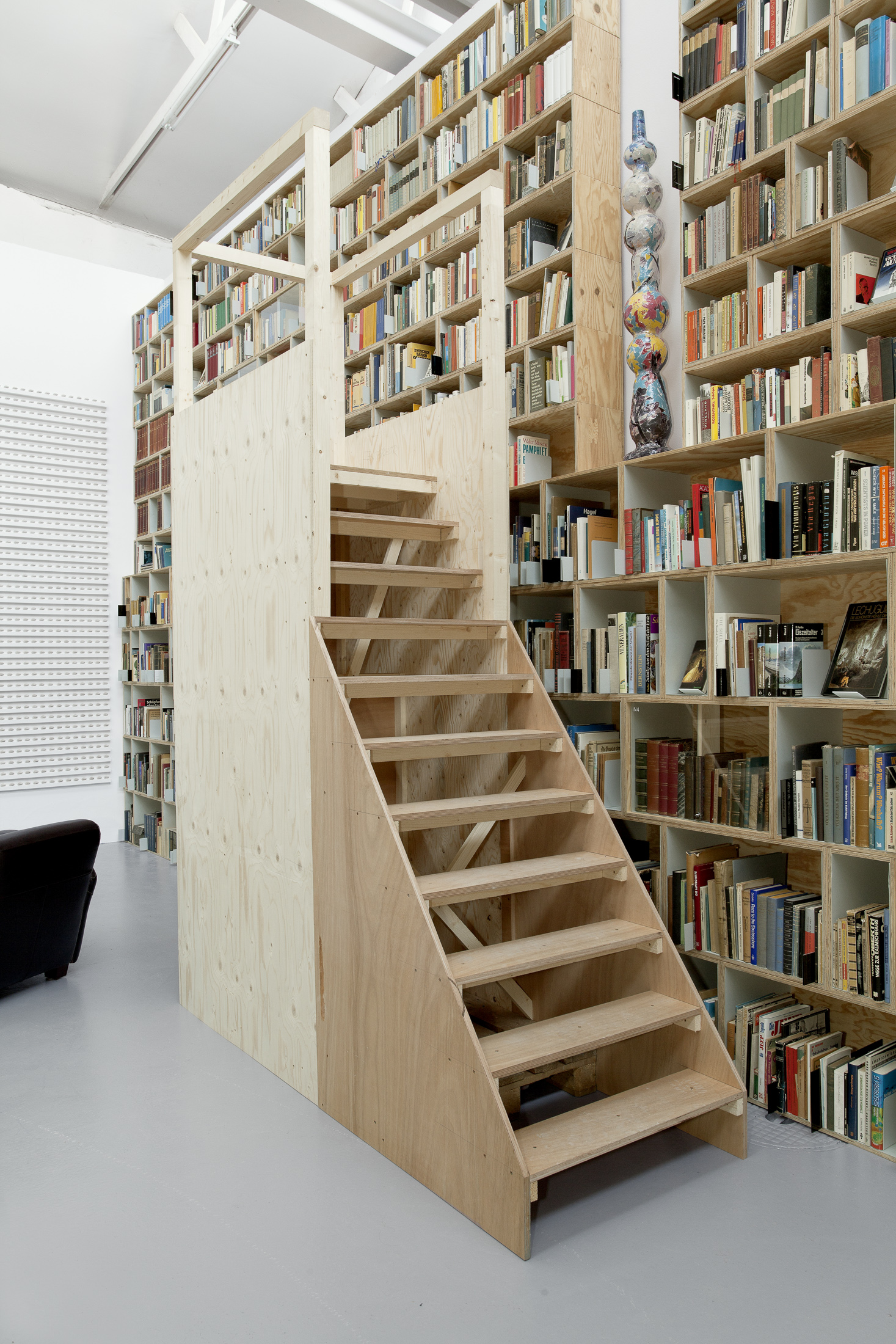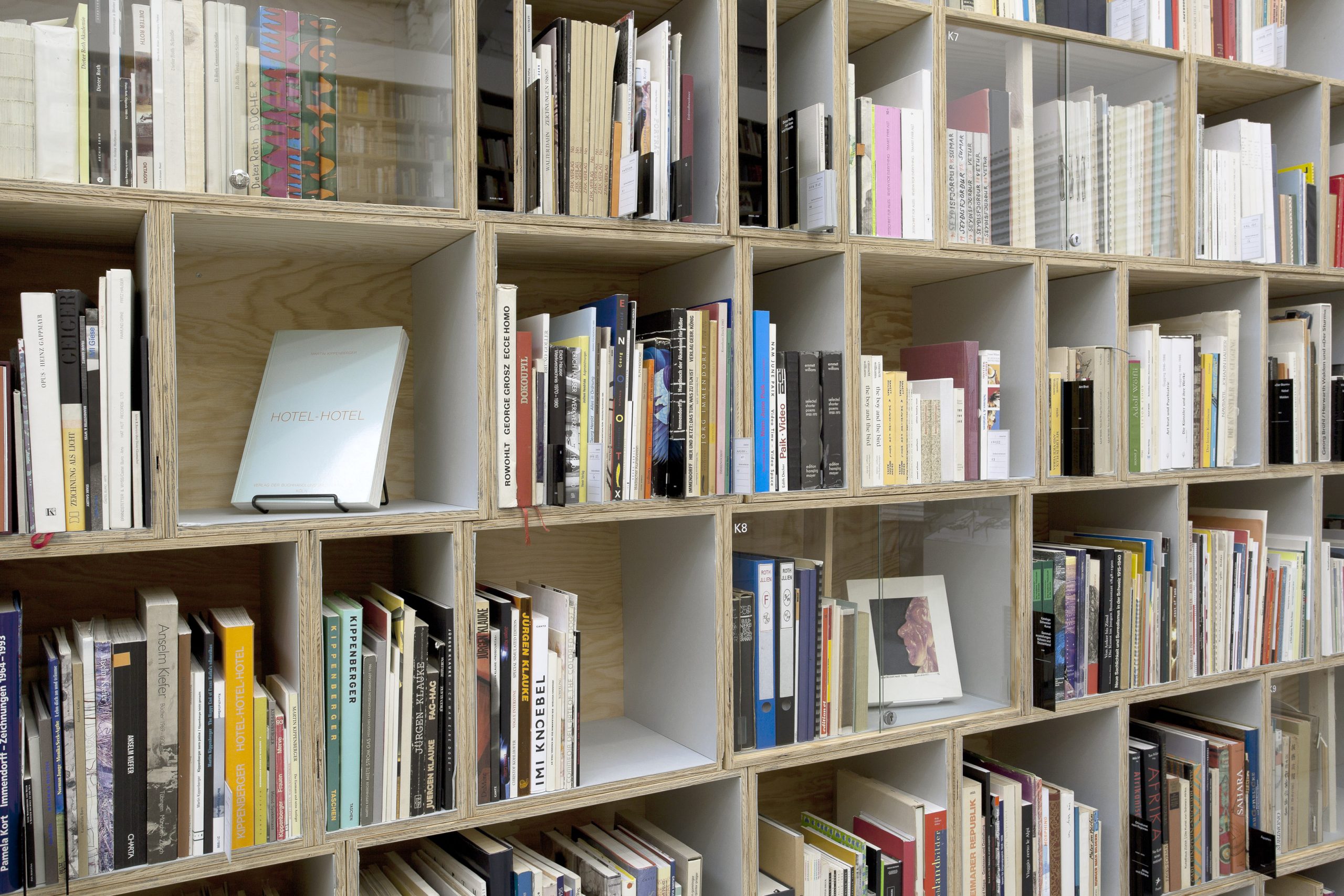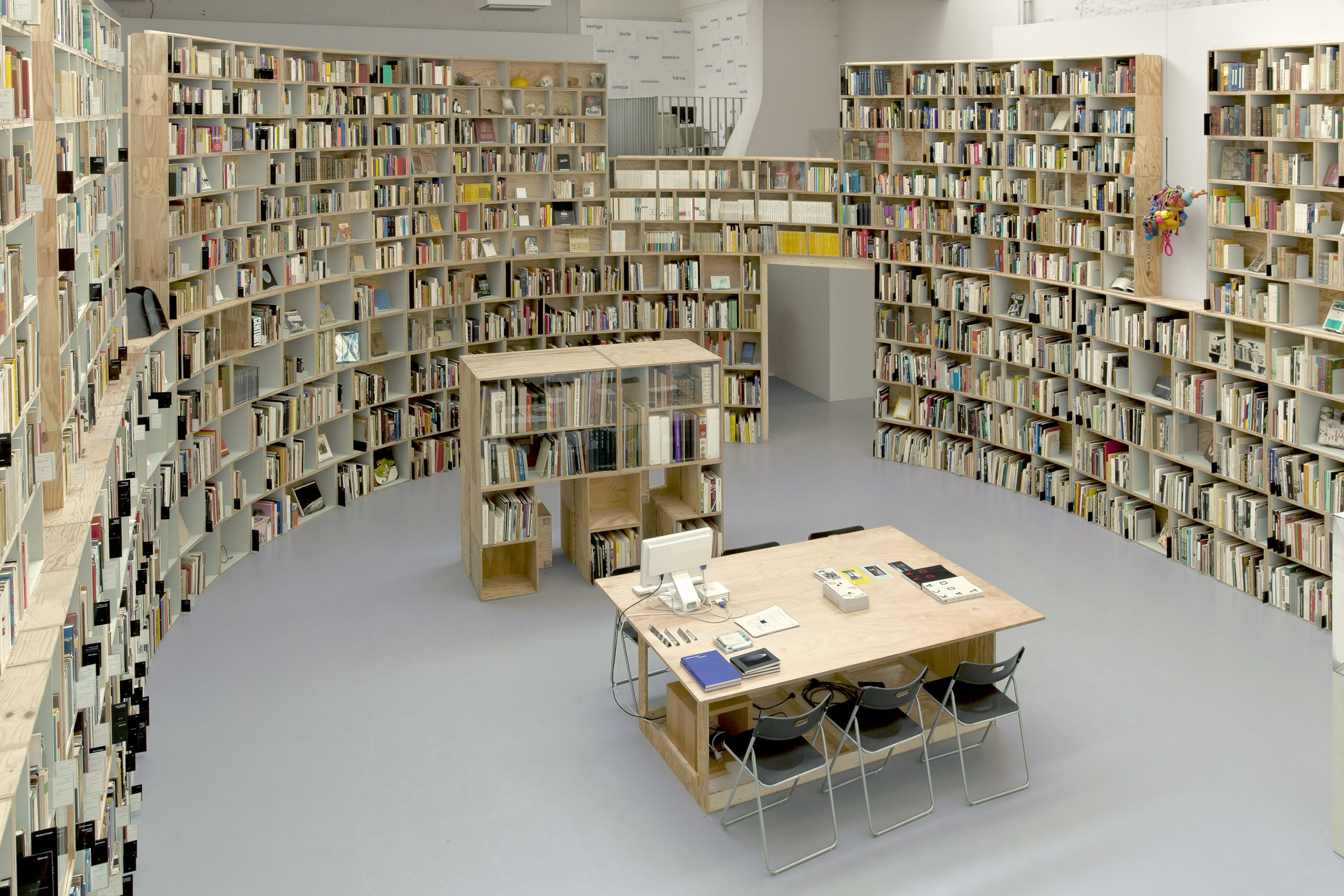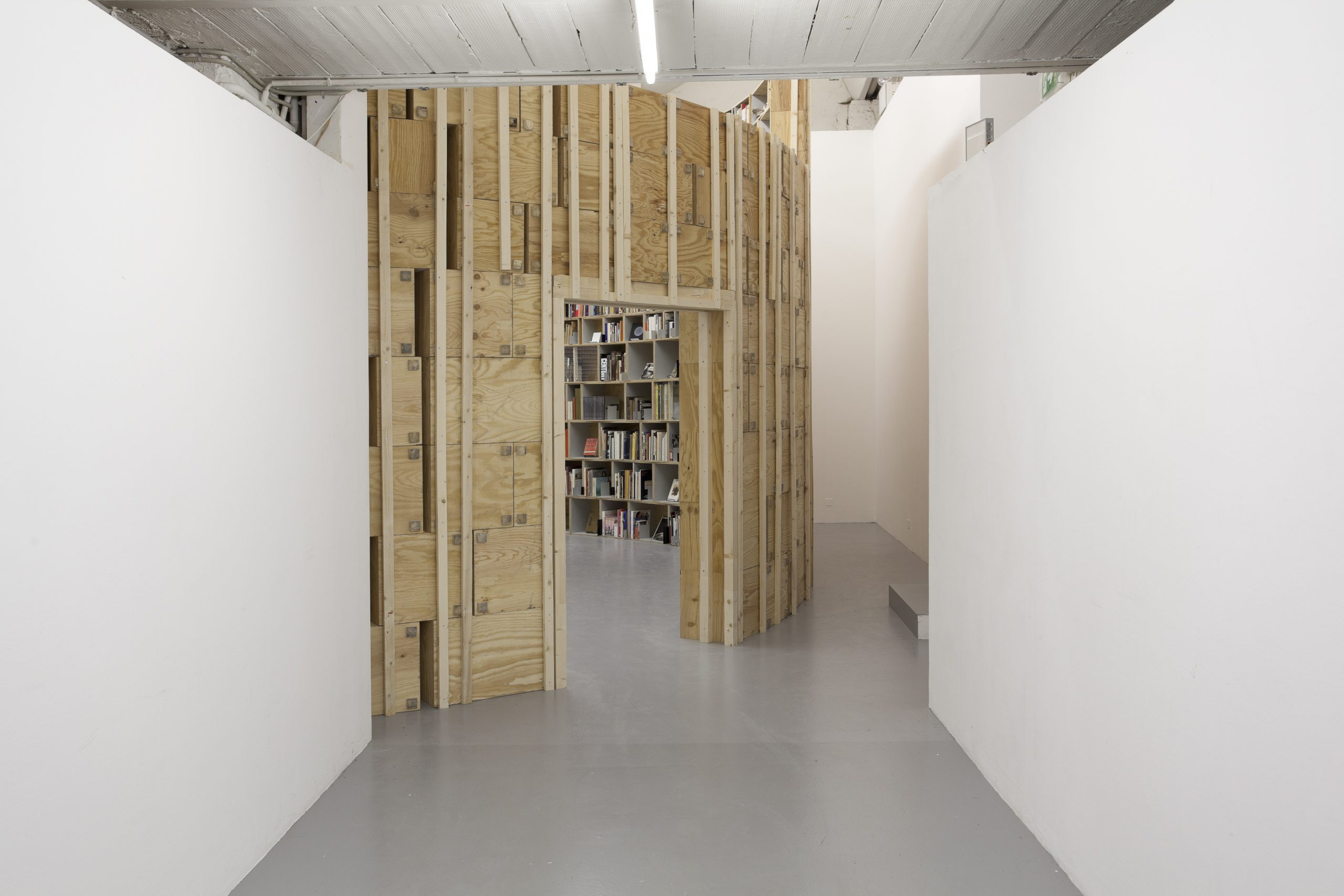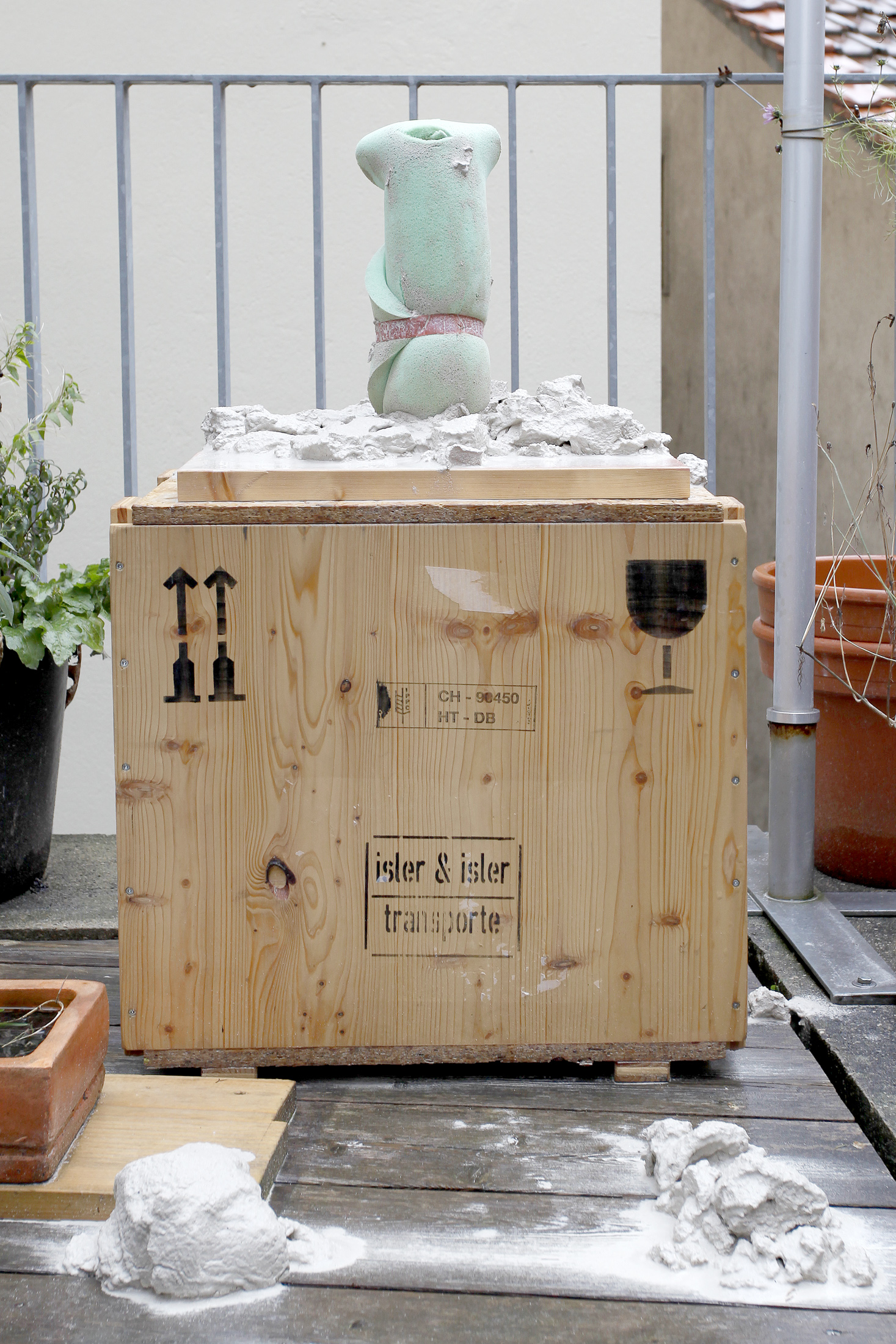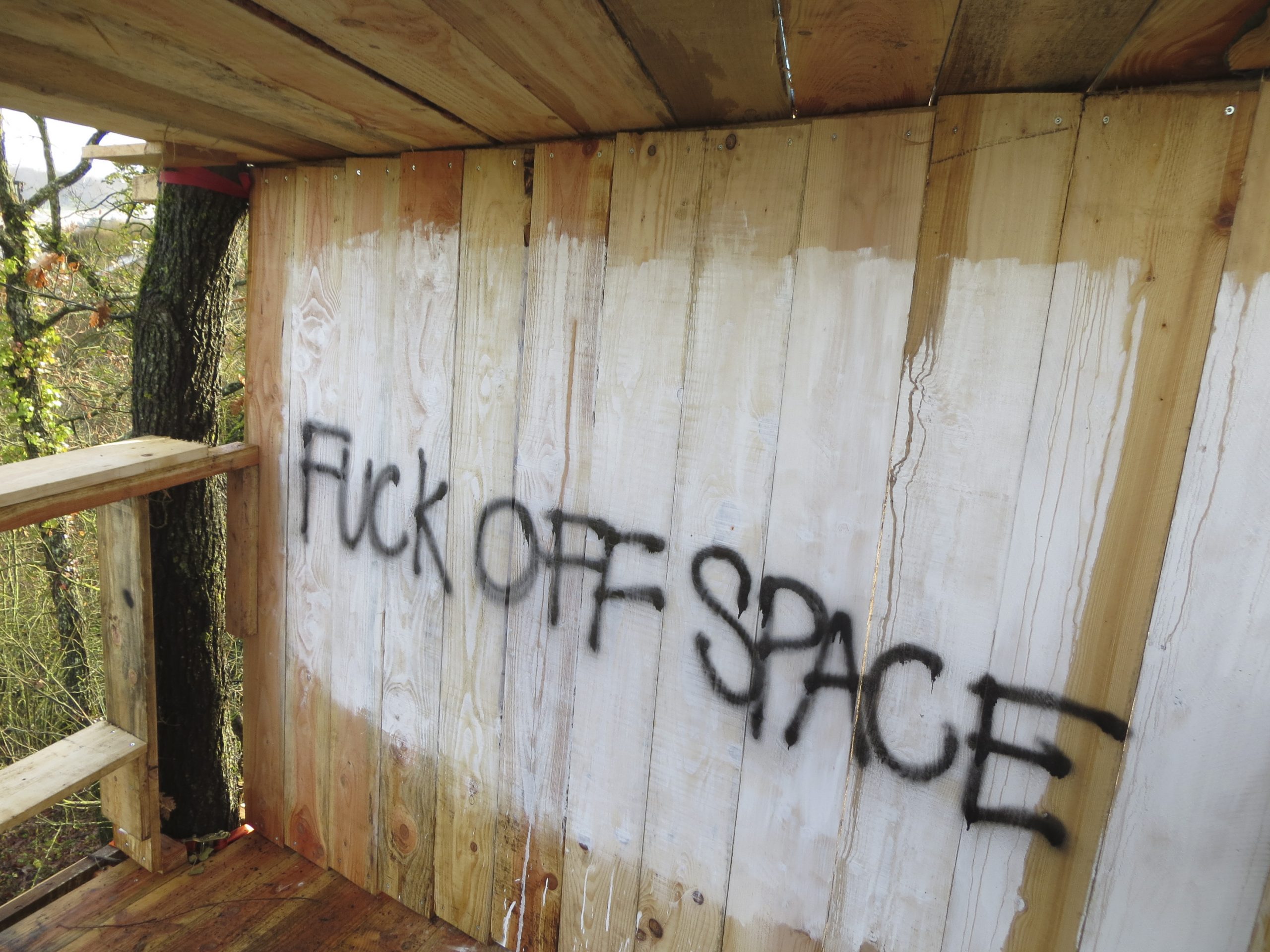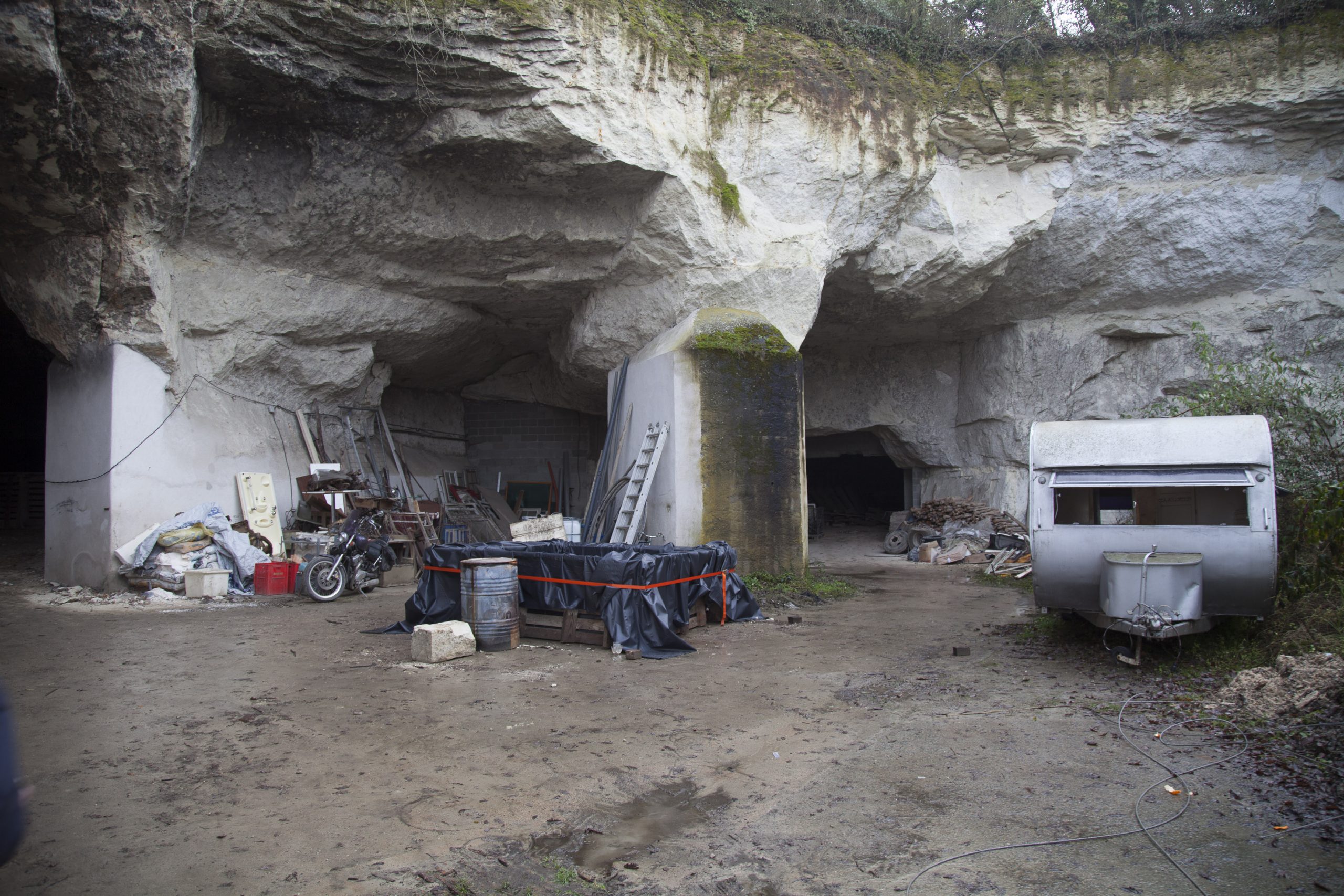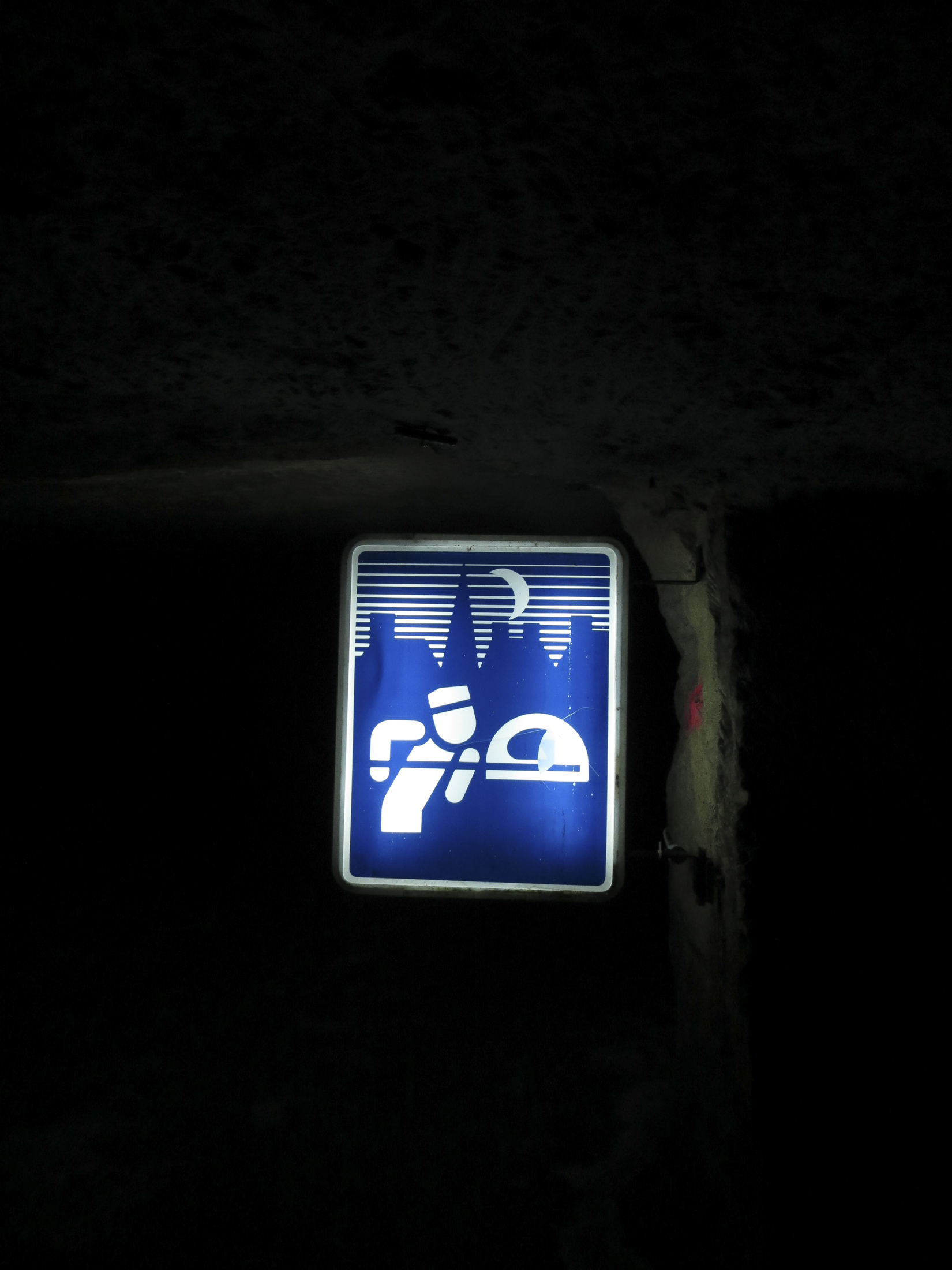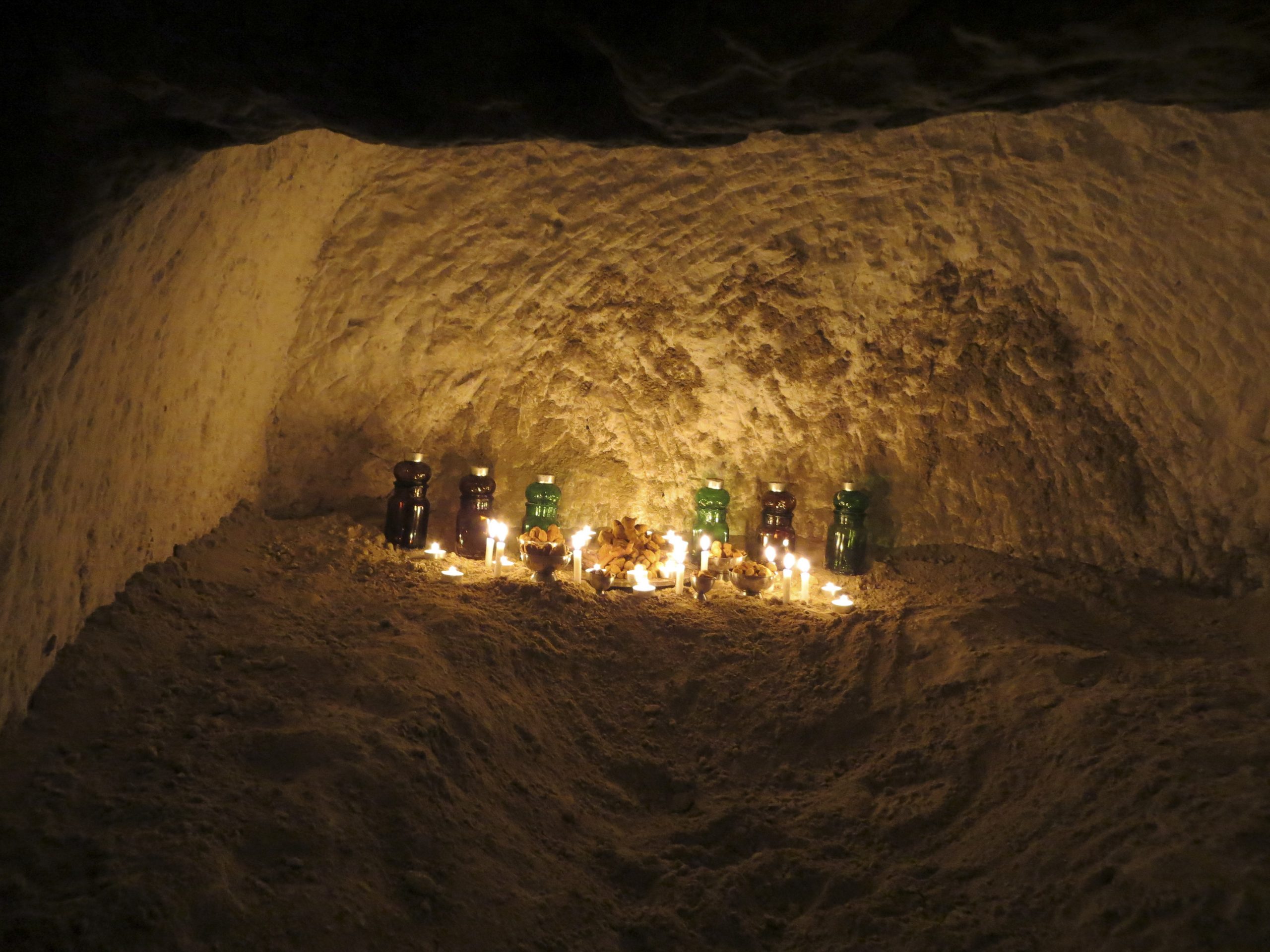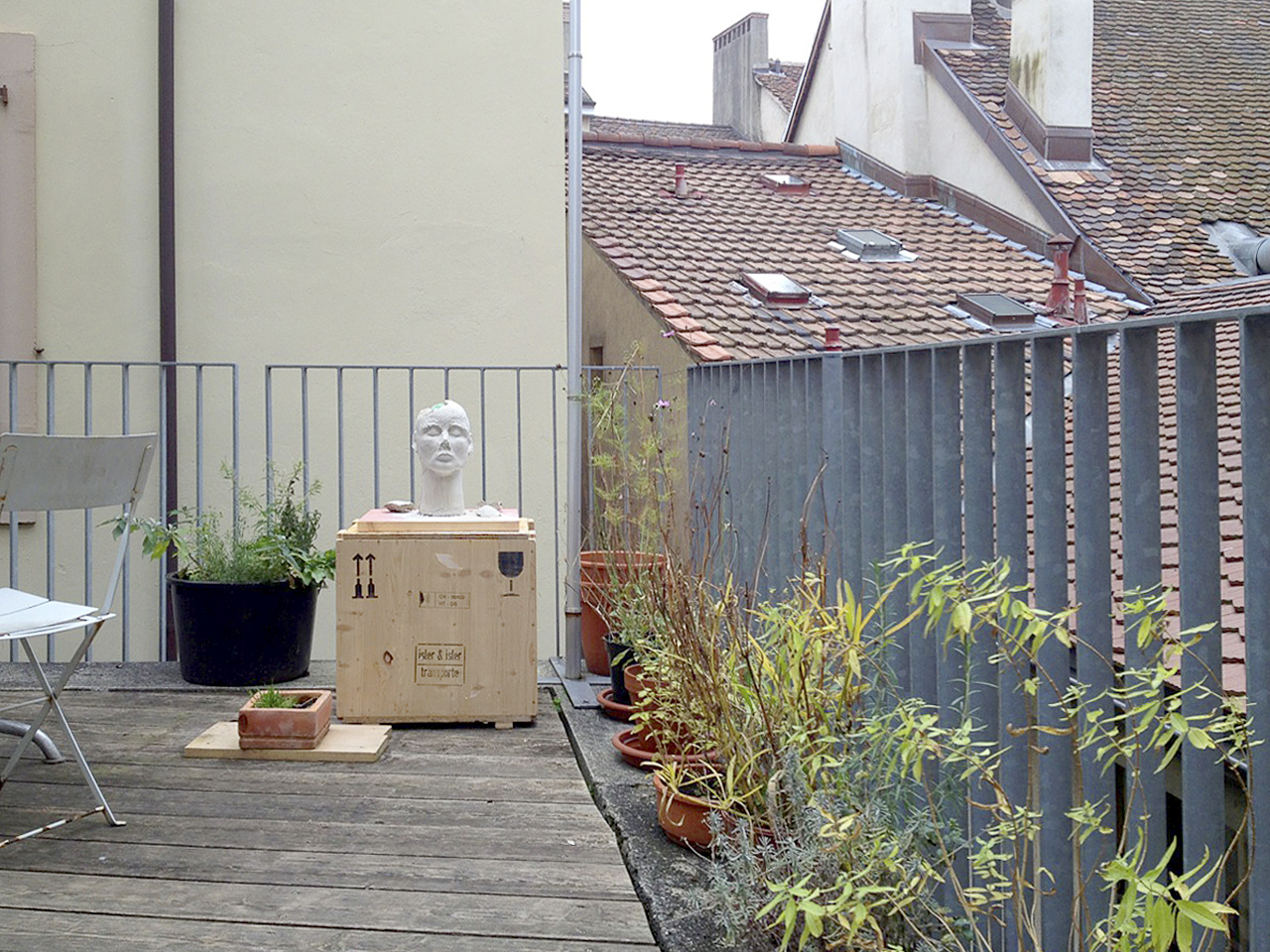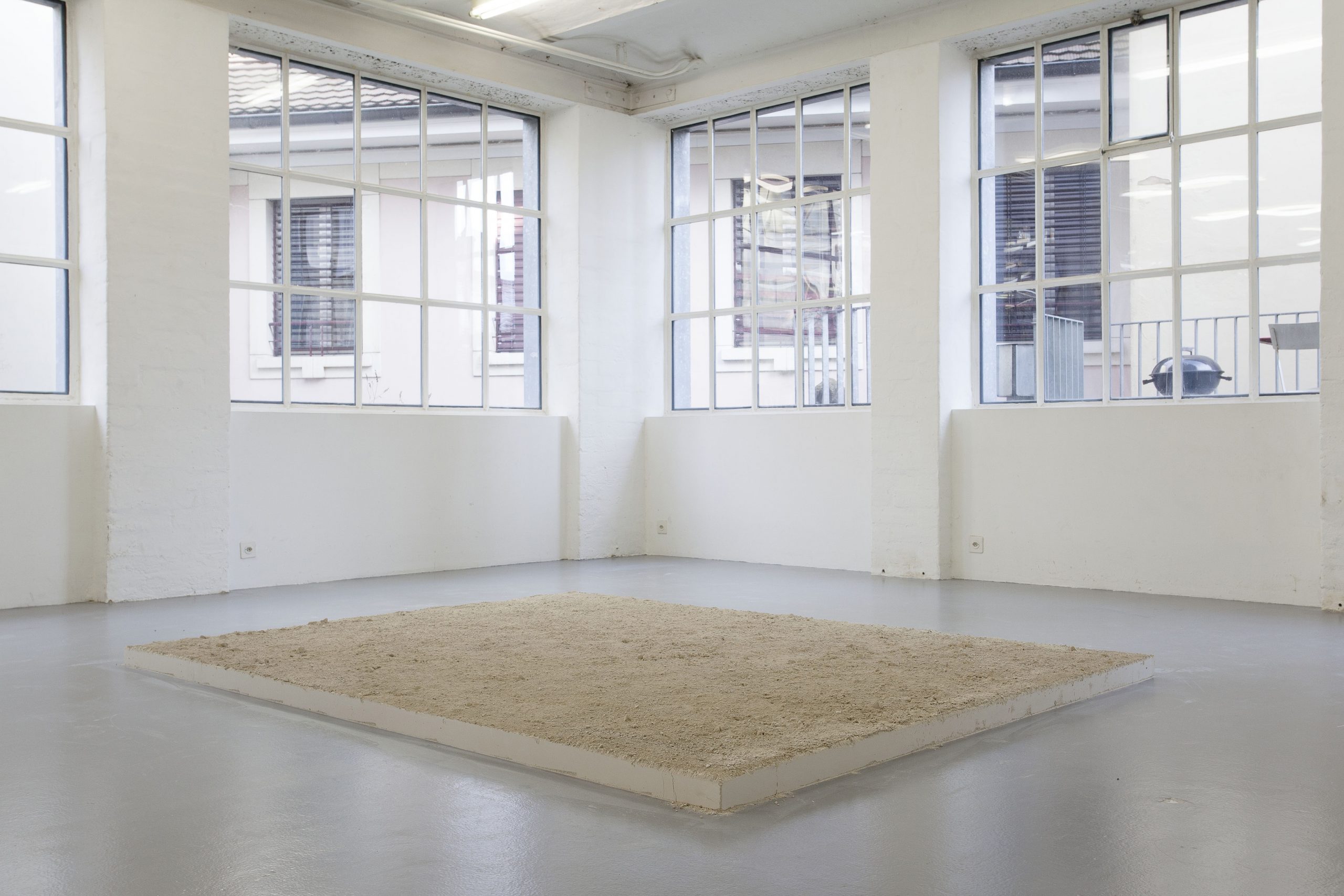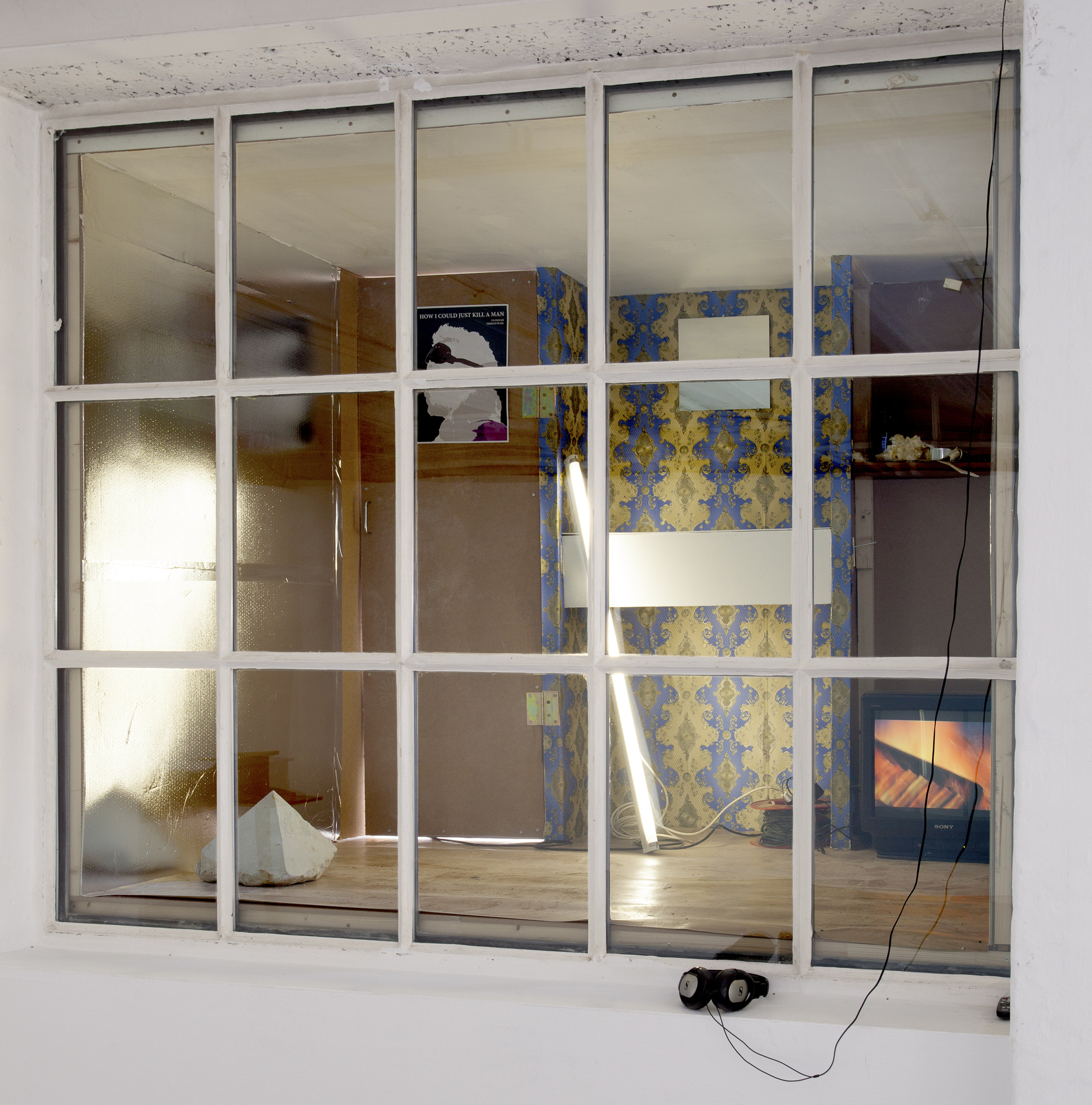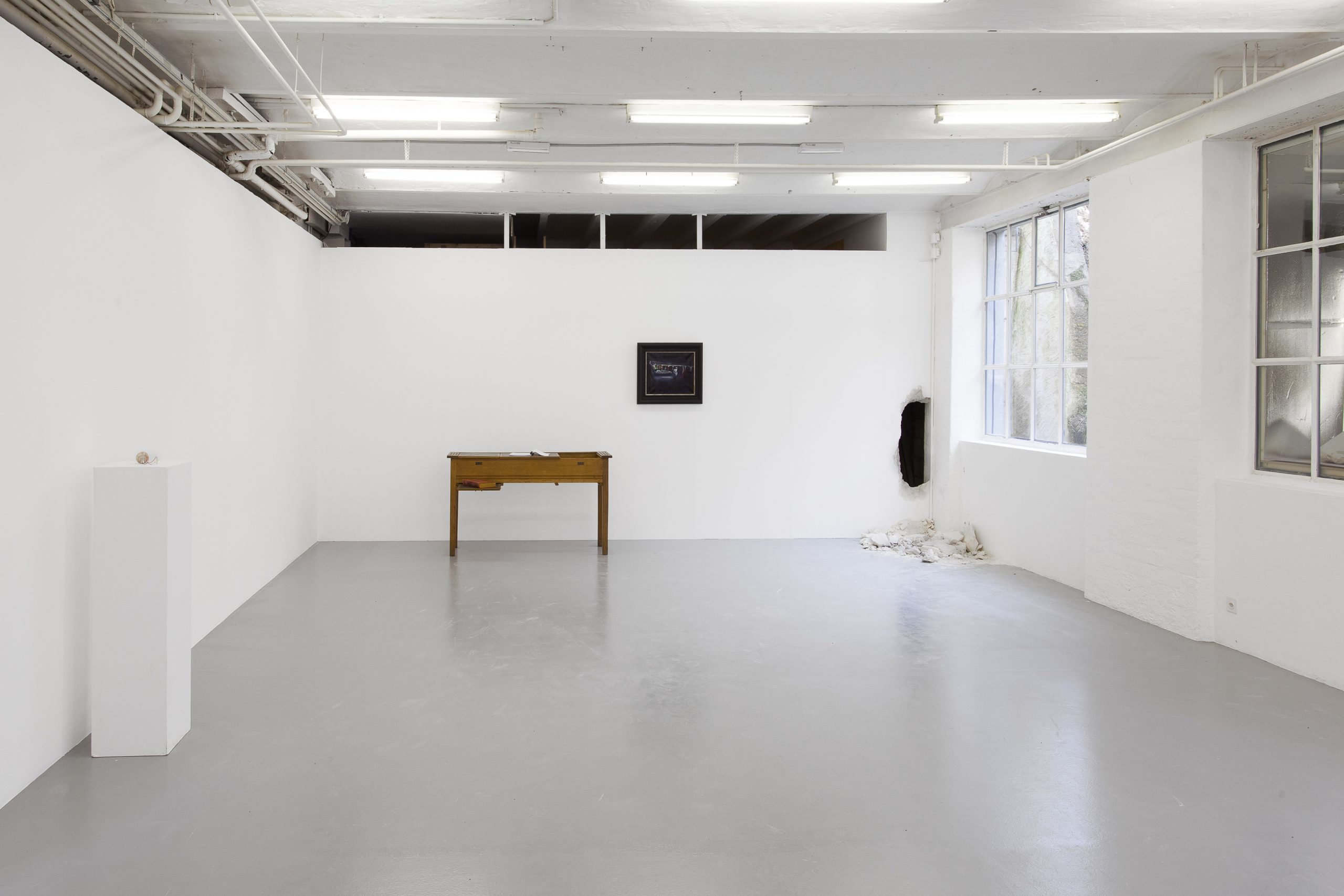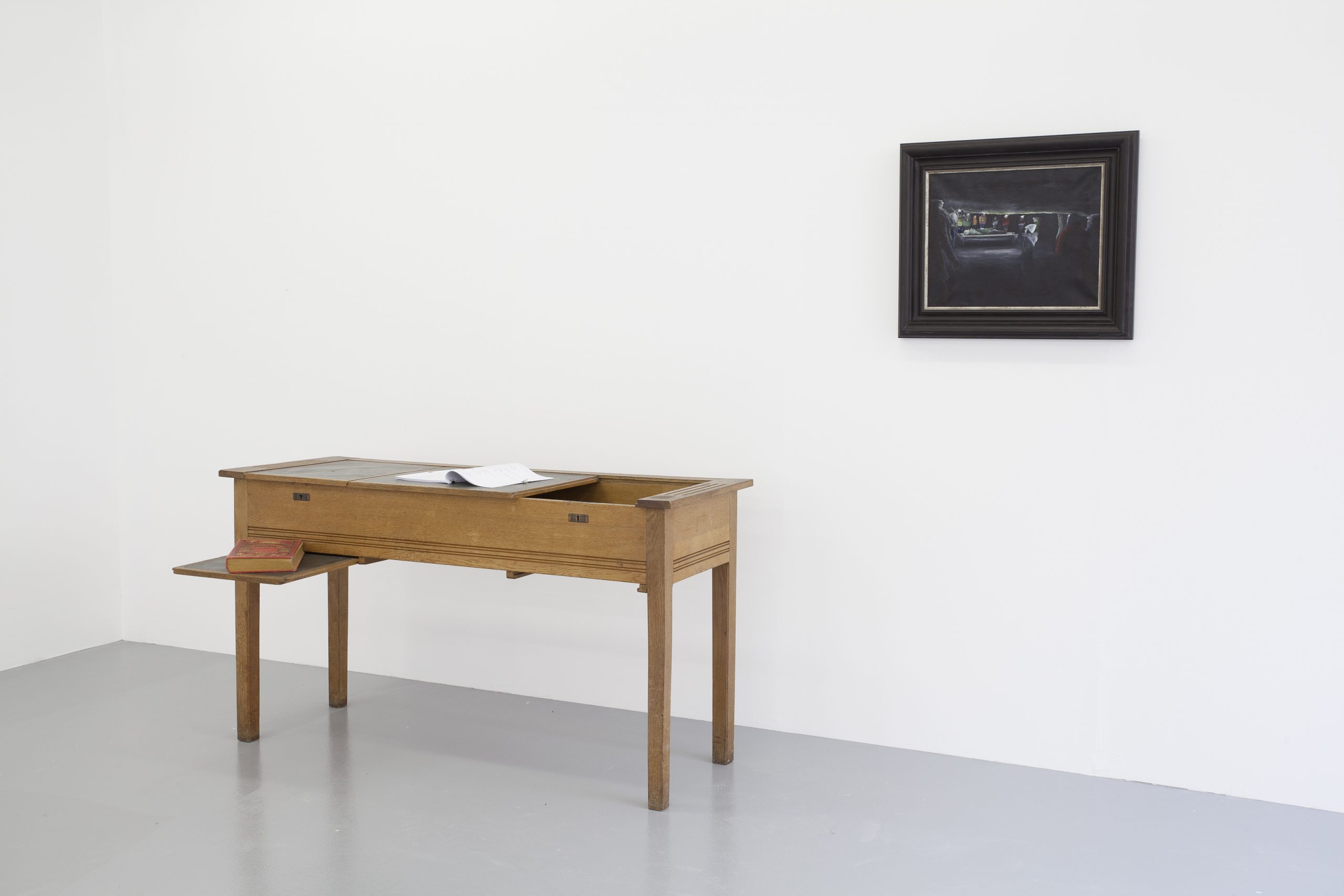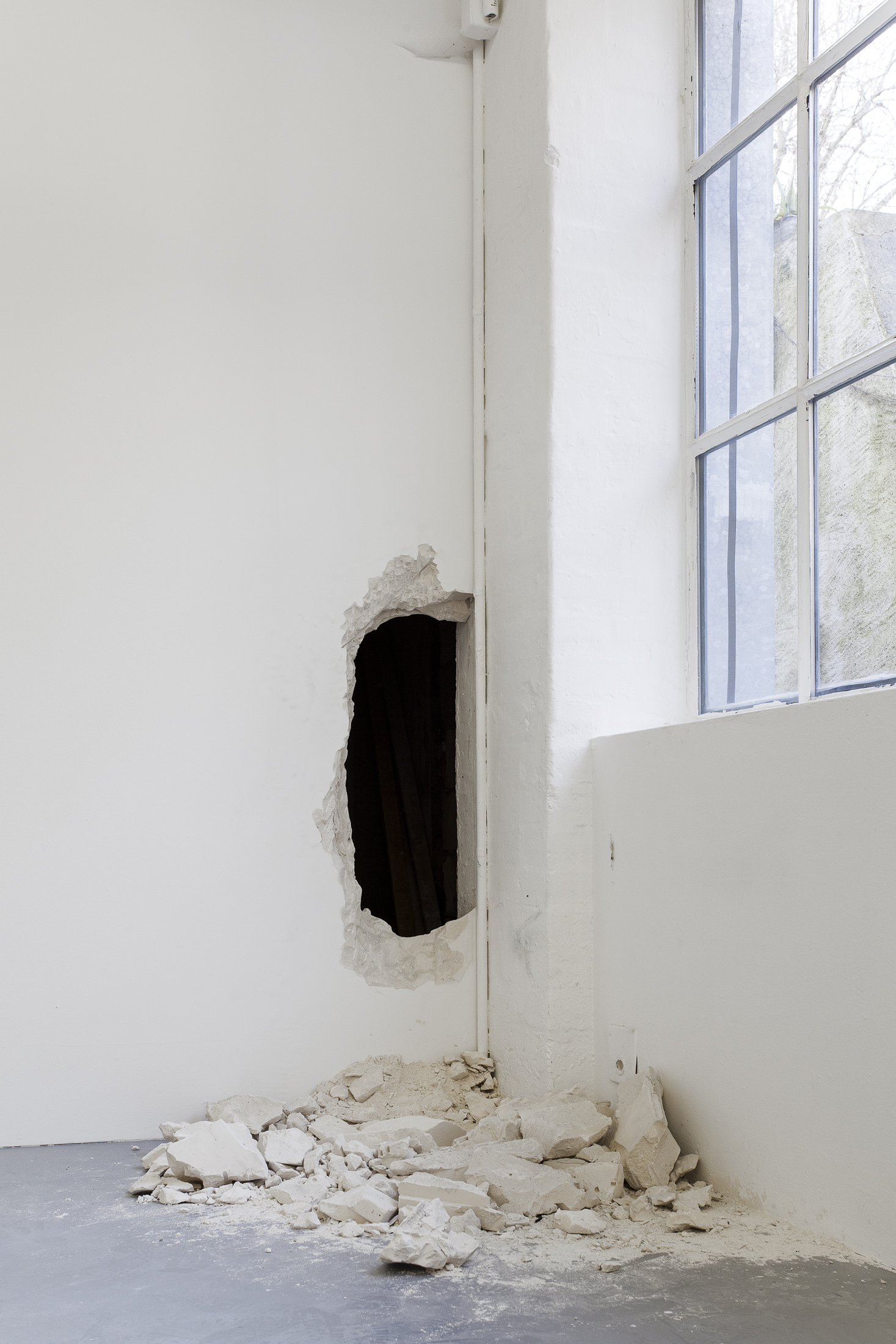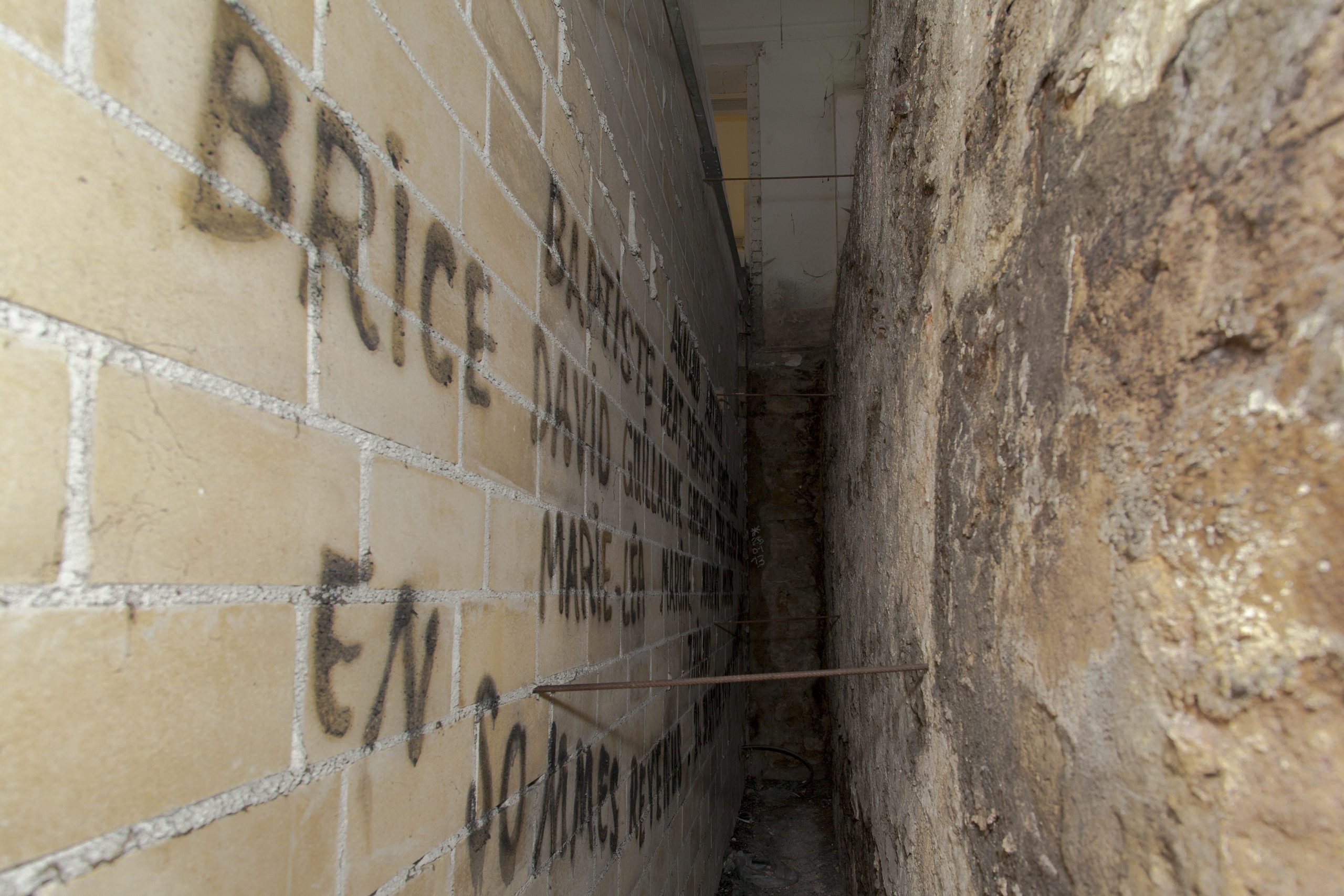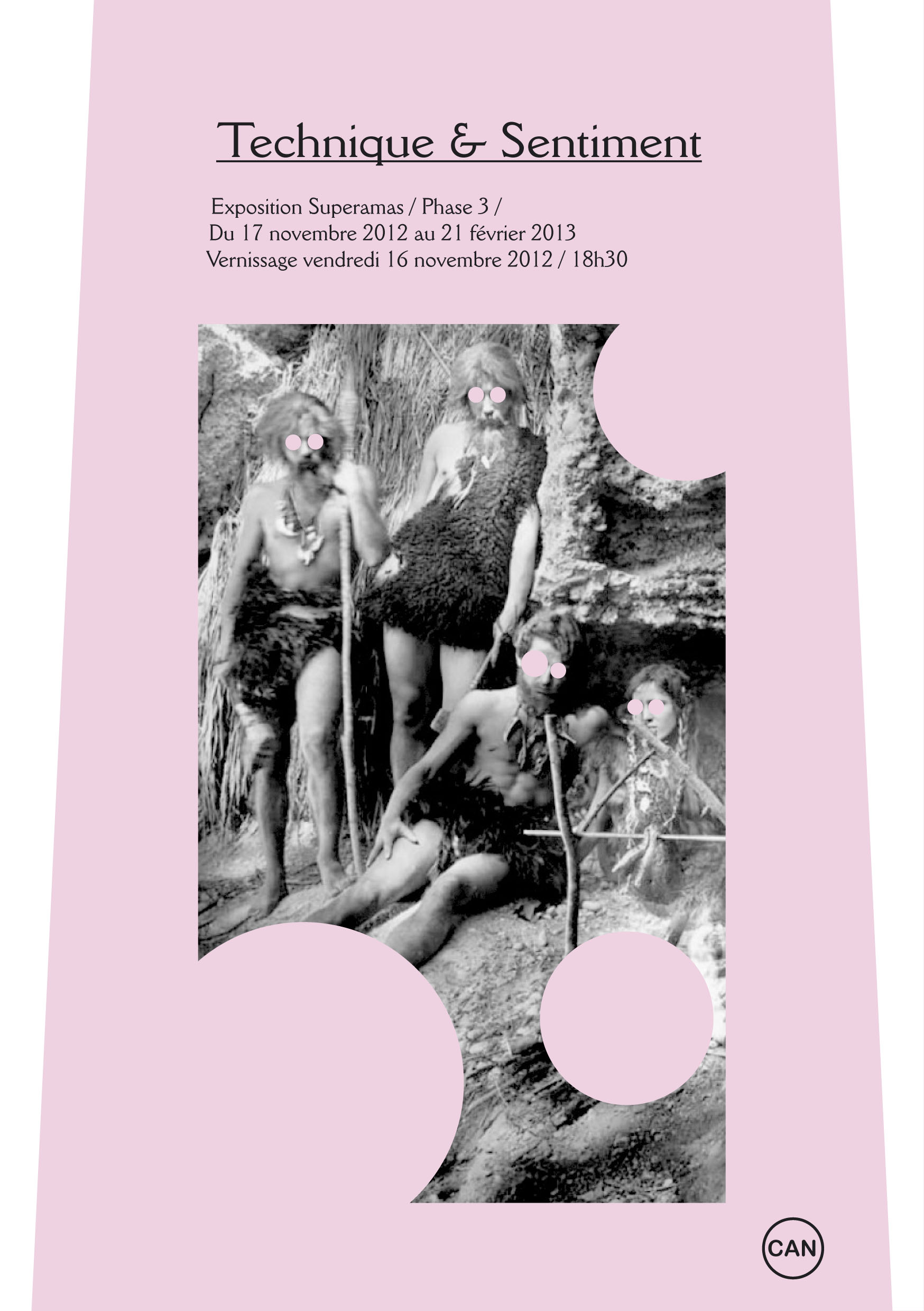Artist Artist
Project Project
Superamas phase n°3
Technique et Sentiment
As of nov 16: Bibliothèque Andreas Züst + Ein Buch bei Nacht – objects for the Andreas Züst library/A project by Ariane Roth, Mara Züst and Samuel Bänziger, www.andreaszuest.net, www.ebbn.ch + Massimo Furlan & Claire de Ribaupierre, Alexandra Leykauf, Beat Lippert
Thereafter: Development of the exhibition at the CAN and epic travels to the caves of Dampierre sur Loire (F), in collaboration with Monstare_DPLG www.monstrare.org: Maxime Bondu, les frères Chapuisat, Markus Kummer, Bénédicte Le Pimpec, Beat Lippert, Benoît-Marie Moriceau, Arnaud Pearl, Guillaume Pellay, the CAN’s team
Technique and Sentiment is a complex and ambitious project with multiple goals. This third phase in the series of evolving exhibitions entitled Supercluster will unfold in four parts, of which the last three will be created in tight collaboration with the Monstrare association:
A. First, the CAN will receive Andreas Züst’s fascinating library, for the first time in Suisse romande and in a new configuration. The opening for the library will be held November 16, 2012.
B. In a second instance (from November 24 to December 3), the invited artists and commissioners will work at the CAN, inspiring themselves from the library, preparing the projects and plans for the third instance of the exhibition. These will be shown in the second space at the CAN.
C. The artists and commissioners will then go for three weeks (from December 4 to 23) to the caves of Dampierre sur Loire (near Saumur in France) to create the envisioned exhibition. A documentation, in the shape of photographs and videos, will be sent on a regular basis to the CAN to be shown next to the initial plans. The exhibition created in the caves will be open to the public December 21. It will be the first cultural manifestation on this site destined to become a space for residencies and contemporary art exhibitions.
D. Finally the group will come back to the CAN for a “mirror” show of the cave version of the exhibition. This exhibition will be inspired by the experience created in the caves offering a reflexion on the influence of the exhibition space using the large gap between the caves and the white cube. The opening for this exhibition will take place January 25, 2013.
Technique and sentiment is an extremely dense project, which touches many of contemporary art’s themes such as questions on the relation between artists and institutions. It will nevertheless be about leading a more experimental than theoretical project, throwing the participants into powerful and contrasted contexts.
The first part of the project will begin with the presentation of Andreas Züst’s library in the CAN. This library, assembled throughout the artist and art collector Andreas Züst’s life (1947-2000), constitutes a unique and personal testimony as well as a stunningly diverse approach to our society. The multiple and associative fields of interest represented by these works range from meteorology to psychedelic experiences, passing through astronomy, physics, botany, art history, anthropology, polar expeditions, photography, painting, music, kitsch, UFO’s and Hell’s Angels among others. If, as with all libraries, it represents the sum of a cumulative knowledge, the subjective choices, often esthetic, of Andreas Züst turned it into an incarnate object that seems to oppose the idea of a monolithic and impenetrable tower of knowledge.
At first, it seems fairly coherent to show a temple of knowledge in a temple of art, two places that symbolize a certain deference towards culture. Yet, from another point of view, they are diametrically opposed: one is the result of an accumulation leading to an over-full, the other is a white cube, an empty and neutral space, issue of the slow process of purification and abstraction. Yet still the visitors of these two types of spaces have similar attitudes, they are generally silent and respectful, move around cautiously as if trying not to be seen, as if they entered a sacred space in which the slightest faux pas would be immediately sanctioned by an invisible force. This impression of sacrality constitutes without a doubt the irrational and residual leavings that more than a century of scientific positivism, as well as a ferocious will to desacralize art, could not make disappear.
The question of the sacralization/desacralization movement of art, of it’s environment and that of it’s receiver, will constitute one of the two axes of work proposed to the artists and curators that will occupy the CAN as soon as the library is installed. The second theme will be of the relationship between artists and institutions. In the institutional critique developed by Hans Haacke, in the end it is the artist who needed to become his own institution. We will make use of this affirmation and complete with its reverse image, working on the “becoming institution” of artists and the “becoming artists” of institutions. The artist-curators (and curator-artists) will have to work together for a collective exhibition, … conceived collectively. They will have to create plans for an exhibition that will be constructed elsewhere, in the caves of Dampierre sur Loire, in France. These plans and projects, created at the CAN, notably inspired by Andreas Züst’s library, will be shown in the art center before the teams departure for the caves. This means conceiving an exhibition, comfortably installed in the art center’s white cube, destined for a place that, in the collective imagination, is the origin of art and that which is sacred, the first offshoot of culture in facing a hostile environment.
The group will then take the road for Dampierre sur Loire, near Saumur in France, to occupy the troglodyte caves. This private space, very rough and with sparse constructions, will receive for the first time a cultural manifestation. Recently taken in hand by the Monstrare association, composed of young artists and french theorists, it is destined to be transformed into a place for residencies and contemporary art exhibitions. This 13’000 square meter site on three levels was fashioned by its exploitation as an extraction mine of Tuffeau (white or ochre stone used in all constructions in the Loire region). It was turned into a mushroom farm in the middle of the twentieth century, where the caves, arches and caverns were used for cultivated mushrooms (T.N. In French: Champignons de Paris, Mushrooms from Paris). It was only in the beginning of the 1990s that the site was completely abandoned. The underground level (level 0) is a vast gallery of more than 13’000 square meters that used to be used for the cultivation and storage of the mushrooms and where we find the old company’s installations (cafeteria, changing rooms, etc…). On the level of the Loire (level 1), there are five troglodytes from the fifteenth century and huge dugout chambers from when the site was still a mine. Above this (level 2), a vast field spreads out that takes up about two thirds of the sites total surface.
The projects’ participants will live for three weeks in the caves themselves, in the dead of winter, in significantly uncomfortable conditions. This communal survival experience should have a strong influence on the exhibition projects’ development, as well as on the thematic reflexions linked to it. They will also participate in the development of subsequent Monstrare projects on this site. The French artist collective hence starts a certain type of “sedentarization” that might lead them to the head of an institution, whereas the CAN’s team for several years now has critically questioned its own role as an institution. The confrontation of these two situations at the heart of a strong life experience should allow an unexpected and explosive exhibition to take place. Throughout this process, a video and photographic documentation will regularly be sent back to the CAN. It will be immediately shown, thus completing (and possibly refuting) the plans and projects that the artists and curators left there. The exhibition created in the caves will be open to the public December 21, with the will to host, among others, Dampierre sur Loire’s village residents.
Early January all the participants will return to the CAN to end this conceptual and physical, back and forth game, between the white cube and the caves, between two spaces that can be seen as both very similar and very different. They both consist of large empty spaces, a universe protected from the outside, walls ready and willing to receive representations, a place of rituals. Their symbolic distance is maybe first temporal, as if one is situated at the beginning of art history – of prehistory – and the other at the end. This obviously seems fairly silly, but no less stimulating to reflect on our relationship towards art and the social rituals that come with it. Andreas Züst library still on display at the CAN will then represent, still symbolically, the link between the two through its accumulation of knowledge since the proverbial beginning of time.
A “mirror” exhibition of the one in the caves will be erected at the CAN. It will attempt to come to terms with the different experiences created, all while being confronted with the initial plans and projects.
Andreas Züst Library
Andreas Züst (1947–2000) was a photographer, a painter, and an art collector; a social butterfly, a publisher, and a film producer; a bibliophile, a scientist, and a patron of the arts. Beginning in the early 1970s, he documented and photographed Zürich’s art and culture scene, transcending the boundaries between subcultures, high culture, and pop culture. It was with this same broad-minded spirit that he later became a collector and publisher of art books.
At the time of his death, Züst’s estate included an almost incomprehensible number of his own works, a collection of some 1,500 artworks, a private library of 12,000 books, and some ten thousand recordings (mostly vinyl records, but also cassette tapes and compact discs). Among these possessions was also a collection of artifacts from the Arctic—the great passion of his last years.
Today, Züst’s recordings and various smaller collections have been mostly scattered and disassembled. His daughter, Mara Züst, has supervised his artistic legacy since 2000. In 2004, the art collection was put on permanent loan to the Aargauer Kunsthaus and, since 2010, Züst’s library, now known as the Bibliothek Andreas Züst, is touring in different locations.
Library Andreas Züst
At Mara Züst and Ariane Roth’s instigation, the library took a public shape which can be presented in diverse places. An ingenious system of flexible boxes, developed by Rahel Flacher and Daniel Gafner, allows a variable and personalized configuration. Consisting of 12 ‘ 000 volumes (associating Andreas Züst’s diverse interests as meteorology, geology, astronomy, physics, botany, art history, anthropology, polar expeditions, photography, painting, music, kitsch, UFOS, Hells Angels, psychedelic experiences), the library stops for the first time in french-speaking Switzerland. This collection includes rare and precious works, as more common and popular publications, eclecticism which doubtless constitutes the fascination which produces this set.
The public can consult the library Andreas Züst in the CAN until January 31st 2013 before it returns to its base situated in Alpenhof, St-Anton/Oberegg (AI).
CAN team:
Arthur de Pury, Marie Villemin, Martin Widmer, Marie Léa Zwahlen, Julian Thompson

